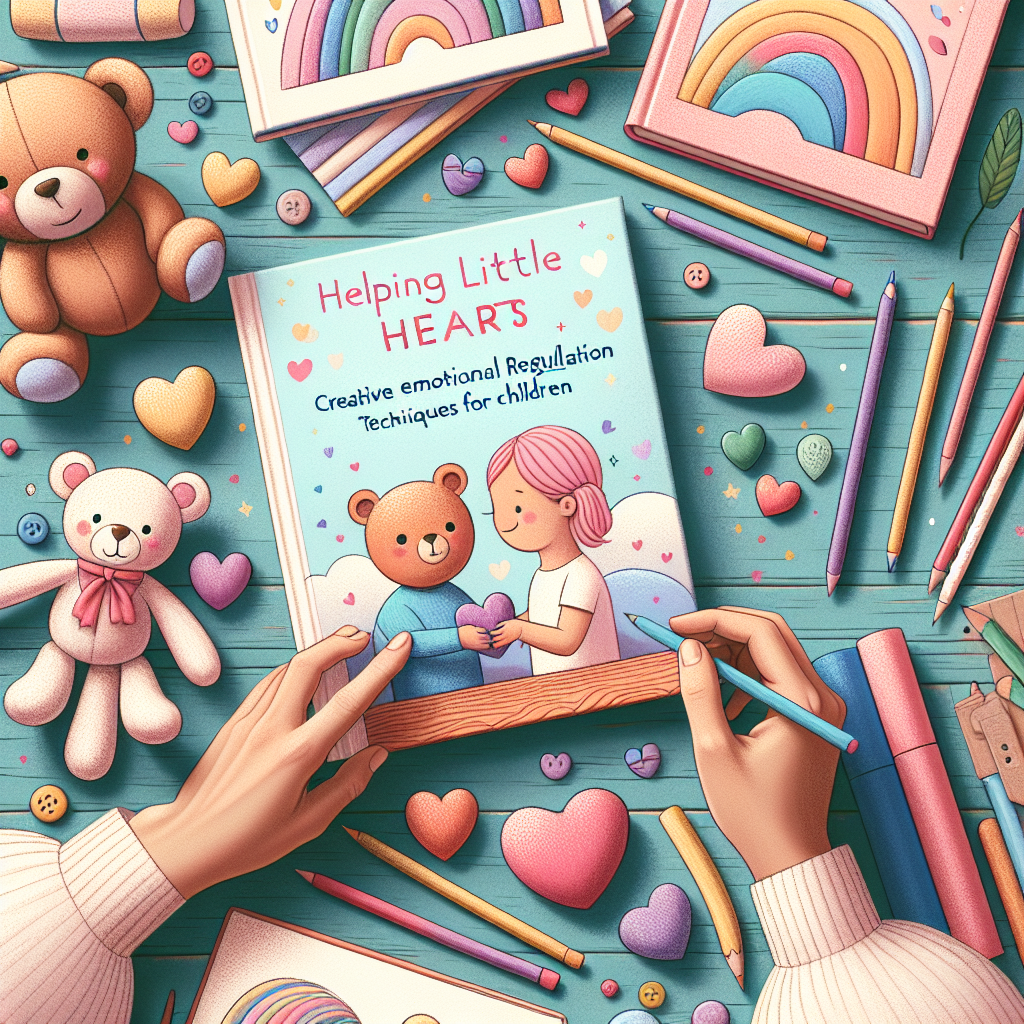
Helping Little Hearts: Creative Emotional Regulation Techniques for Children
Introduction
In today’s fast-paced world, emotional well-being has become increasingly important for children. As we strive to promote healthier emotional intelligence in our youth, we highlight the significance of Helping Little Hearts: Creative Emotional Regulation Techniques for Children. When children learn to manage their emotions effectively, they become more resilient, better equipped to face challenges, and capable of establishing healthier relationships. This article will unravel innovative techniques and strategies that parents, educators, and caregivers can incorporate to support emotional regulation among children, ensuring their hearts are not just little, but empowered.
Understanding Emotional Regulation
Before we dive into specific techniques, it’s essential to grasp what emotional regulation entails. At its core, emotional regulation is the process through which individuals monitor, evaluate, and react to their emotional experiences. For children, this process can be particularly challenging due to their developing cognitive and emotional faculties. Children often find themselves overwhelmed by feelings of sadness, anger, or frustration, making it vital for us to provide them with tools that promote emotional resilience.
The Importance of Teaching Emotional Regulation Early
Studies show that children who learn emotional regulation techniques tend to perform better academically and socially. They experience lower levels of anxiety and depression and possess higher self-esteem. Here’s a table summarizing the benefits of emotional regulation:
| Benefits | Description |
|---|---|
| Improved Academic Performance | Students can focus better and have enhanced learning capabilities. |
| Better Social Skills | Helps in building healthy relationships and managing conflict. |
| Increased Self-Esteem | Children feel more confident in handling challenges. |
| Reduced Anxiety and Depression | Less emotional upheaval leads to improved mental health. |
Creative Techniques for Emotional Regulation
1. The Emotion Wheel
The emotion wheel is a simple yet powerful tool that can assist children in identifying their emotions more accurately. It categorizes primary emotions into subcategories, allowing children to articulate what they are feeling more specifically. For instance, if a child feels "bad," they can explore whether they are actually feeling "sad," "frustrated," or "angry."
Case Study: A third-grade teacher introduced the emotion wheel during class discussions. One student realized he often felt "frustrated" when his classmates interrupted him, which led to more productive communication strategies during group work.
2. Mindfulness and Breathing Techniques
Mindfulness encourages children to slow down and recognize their feelings without judgment. Incorporating breathing techniques can further help reduce anxieties associated with overwhelming emotions.
- Technique Example: The "5-5-5" method encourages children to breathe in for five seconds, hold for five seconds, and exhale for five seconds. This exercise can help them pause and regain control over their feelings.
Case Study: A counseling program in a local school utilized brief mindfulness sessions daily. This practice reduced the overall anxiety levels reported by students, leading to a more harmonious classroom environment.
3. Creative Expression through Art and Music
Art and music are incredible outlets for emotional expression. Whether through painting, drawing, or playing an instrument, children often find it easier to express feelings they cannot articulate verbally.
- Activity Example: Encourage children to create an art piece that represents their emotional state. Allow them to share it with the group if they feel comfortable.
Case Study: A community art program showed that children who participated in collaborative art projects displayed greater emotional awareness and expressed more complex emotions compared to peers who did not.
4. Storytelling and Literature
Stories can be a mirror that reflects a child’s emotions and experiences. Using literature as a tool, caregivers can guide children to relate their feelings to characters in stories, offering a safe space to explore and discuss emotions.
- Implementation: Read stories that focus on emotional challenges and discuss the characters’ feelings and choices.
Case Study: A children’s librarian confirmed that her storytelling sessions encouraged children to open up about their feelings. Post-session discussions fostered peer support and emotional growth.
The Role of Families and Educators
Fostering a Safe Environment
Both families and educators play a crucial role in teaching Helping Little Hearts: Creative Emotional Regulation Techniques for Children. When children feel safe to express their emotions, they become more willing to explore and address them. Here are steps you can take:
- Open Communication: Encourage children to talk about their feelings without fear of judgment.
- Model Emotional Regulation: Demonstrate how you handle your emotions. Children learn through observation.
- Consistent Reinforcement: Continually provide reminders and opportunities for children to practice emotional regulation techniques.
Collaborative Approaches
When schools and families work together, the impact on children can be profoundly positive. Regular workshops can empower parents with the tools they need to reinforce emotional regulation strategies at home.
Table: Parent-Teacher Collaborative Techniques
| Technique | Description |
|---|---|
| Workshops | Organize seminars on emotional intelligence for parents. |
| Resource Sharing | Share books and materials that support emotional learning. |
| Progress Reports | Regular updates on the child’s emotional growth. |
Conclusion: Inspiring Emotional Resilience
By integrating Helping Little Hearts: Creative Emotional Regulation Techniques for Children into daily routines, we foster resilience in our children. Practicing the techniques outlined in this article—the emotion wheel, mindfulness exercises, creative expression, and storytelling—can empower children to navigate their emotions constructively. As parents, educators, and caregivers, we have the responsibility to guide them on this journey towards emotional mastery.
Let’s inspire our little hearts today, nurturing a generation that understands and embraces their emotions, transforms challenges into opportunities, and fosters a more compassionate world.
FAQs
1. What are emotional regulation techniques for children?
Emotional regulation techniques are strategies that help children identify, understand, and manage their emotions effectively. Techniques can include activities like breathing exercises, art expression, and the use of emotion wheels.
2. How can I encourage my child to express their emotions?
Create a supportive environment by encouraging open dialogue about feelings. Use storytelling, art, or music to help them articulate what they are experiencing.
3. At what age should children start learning emotional regulation techniques?
It’s beneficial to introduce emotional regulation techniques from early childhood. Children as young as three can begin to understand basic emotions, and strategies can be adapted as they grow.
4. How do I know if my child needs help with emotional regulation?
Signs of difficulty may include frequent tantrums, withdrawal, anxiety, or outbursts. If you notice persistent challenges in their emotional expression, it may be helpful to seek guidance from a professional.
5. Can emotional regulation techniques be used in schools?
Absolutely! Educators can incorporate emotional regulation techniques into the curriculum. Programs focusing on social-emotional learning have become increasingly popular in schools nationwide, proving effective in enhancing students’ emotional resilience.
By utilizing Helping Little Hearts: Creative Emotional Regulation Techniques for Children, we can empower our youth to navigate their feelings, ultimately leading to a healthier and happier future. Embrace these techniques and witness the remarkable changes they can bring to the lives of children.


















